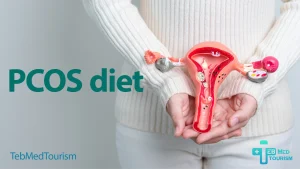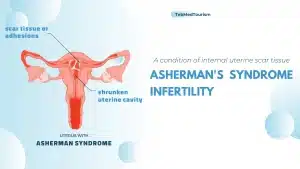Let’s go to know about all of these topics especially by knowing the newest information, which released in 2024. As you know, Down syndrome is a chromosomal abnormality also known as trisomy 21 named for the first time by John Langdon Down a British physician who described it in 1866.
Preventing down syndrome is one of the major challenges among couple especially, when they want to experience pregnancy at an older age. There are several ways to diagnose Down syndrome before birth but there are no way to prevent and avoid down syndrome.
However, you can decrease the chance of having baby with this abnormality. The most common way to prevent down syndrome in 2024 is PGT test. Preimplantation genetic testing (PGT) paves the way for Down syndrome screening and diagnosis by applying certain preimplantation genetic tests (PGT) and analyzes to embryos created through in vitro fertilization (IVF) before they are transferred to a woman’s uterus.
Thus, prevention of down syndrome is very important after IVF cycle. If you have a genetic predisposition or a high risk of having a child with Down syndrome or have already given birth to a child with Down syndrome, TebMedTourism recommends a free consultation with our genetic counsellor before pregnancy. TebMedTourism’s free genetic consultation will help you understand your chances of having a child without Down syndrome.
What are the risk factors of Down syndrome?
The estimated incidence of Down syndrome is 1 in 1000 live births worldwide. About 3,000 to 5,000 children are diagnosed with this chromosomal disorder annually. In most cases, Down syndrome is not inherited – rather, it is caused by an error in cell division early in fetal development. This condition can affect anyone. It is a genetic condition and is not caused by anything the parents did before or during pregnancy. Most cases of Down syndrome occur accidentally (accidentally). People do not usually inherit Down syndrome in an autosomal dominant or recessive pattern at conception, when the egg and sperm meet.Some parents have a higher risk of having a child with this genetic condition. Here we tell you common causes of Down syndrome according to the latest publication in 2024 and 2023:
- Pregnancy at an older age: The chance of having a baby with Down syndrome increases as you get older. This is because the older you get, the greater the risk of chromosomal division in your eggs. Research shows that the risk of having a child with this disease increases after the age of 35. However, most children with the genetic syndrome are born before the age of 35 because younger mothers are likely to give birth to more children.
- Genetic predisposition: Both women and men can pass the genetic transfer of the condition to their children.
- Having a child with Down syndrome: Parents who have a Down syndrome translocation or have a child with Down syndrome are in increased risk to have a child with another genetic condition.
How to avoid down syndrome in 2024?
With planned pregnancy methods, you can first go to specialized genetic consultation centers and find out the probability of Down syndrome of your child with genetic counseling and special tests, and avoid pregnancy in case of high risk. It is possible to prevent Down syndrome in 2024.
Pre-implantation Genetic Testing (PGT) is a research procedure in which embryos are screened for genetic diseases during in vitro fertilization (IVF) before the embryo is transferred to the woman’s uterus. Furthermore, PGT can detect chromosomal abnormalities such as Down syndrome, trisomy 21 (extra copy of chromosome 21), sex chromosome abnormalities, etc.
There are two types of PGT which are preimplantation genetic testing for aneuploidy (PGT-A) which is also called preimplantation genetic screening (PGS) and preimplantation genetic testing for the monogenic disorder (PGT-M) which is also called preimplantation genetic diagnosis (PGD).
PGS is also recommended to screen chromosomal abnormalities and detect Down syndrome. Studies have shown that PGS can reduce the risk of Down syndrome by 0.5-1% through embryo transfer. This is significantly lower than the baseline risk in the general population, which varies by maternal age.
For example, the risk of Down syndrome in a 35-year-old woman is about 1 in 192, while in a 40-year-old woman the risk is 1 in 66. Thus, patients are more likely to perform PGS to ensure that their IVF treatment chance for a successful pregnancy is increased.
PGD is a process of genetic testing that analyzes embryos to diagnose specific known hereditary disorders that have a high risk of passing on from parents to their children. PGD is prescribed for couples who are aware of their family history of inheriting a specific genetic abnormality and may have a genetic predisposition to pass on that abnormality to their children.
So the question is that how PGD can be used to prevent children being born with specific genetic defects? PGD testing is highly recommended for couples with a history of multiple miscarriages, birth defects, known chromosome abnormality, Trisomy 21 or Down syndrome, and Trisomy 18 known as Edward syndrome which occurs due to aneuploidy.
In summary, One of the main and unique differences between PGD and PGS testing is that the PGS scope of testing and sphere of screening is wider and broader than the PGD and requires more time, energy, and money to get a quality result.
How to Prevent Down Syndrome during pregnancy?
Health care providers can check for Down syndrome during pregnancy (before birth) or after the baby is born. There are two types of tests for Down syndrome during pregnancy:
- Prenatal screening: This test can show a greater likelihood that the fetus has Down syndrome, but it cannot determine if Down syndrome is definitely present. If the screening test shows an increased likelihood, a diagnostic test may be ordered.
- Prenatal diagnostic test: This test can definitely determine if Down syndrome is present. Diagnostic tests involve a slightly higher risk to the fetus than screening tests.
Screening for Down syndrome
There are several options for prenatal screening for Down syndrome. These include:Blood test and ultrasound in the first trimester of pregnancy. This is the most accepted method of first trimester screening.
- A blood test during the first trimester of pregnancy allows the health care provider to check for “markers” in the mother’s blood, such as certain proteins that indicate an increased likelihood of Down syndrome. The health care provider then performs an ultrasound, which uses high-frequency sound. waves to create images. Ultrasound can detect fluid at the back of the fetus’s neck, which sometimes indicates Down syndrome. An ultrasound examination is called a measurement of the transparency of the neck. In the first trimester, this combined method provides a more effective or comparable detection rate than the methods used in the second trimester.
- Blood test in the second trimester of pregnancy. As in the first trimester, a blood test allows the healthcare provider to check for markers in the mother’s blood. The triple screen looks for the levels of three different characters; the quad screen looks for levels of four different markers.
- Combined test (once called integrated test). This approach uses both a blood test and an ultrasound in both the first and second trimesters. Health care providers combine all of these results to come up with a single Down syndrome risk score
If a woman is pregnant and carrying twins or triplets, the blood test is less reliable because substances from a fetus with Down syndrome may be heavier to detect.
Prenatal diagnostic test for Down syndrome
If the screening test indicates the possibility of Down syndrome, a diagnostic test can be performed. ACOG recommends giving pregnant women of all ages the option to skip the screening test and have a diagnostic test first. Until recently, this option was only offered to women over 35 and other high-risk women because of the low risk of miscarriage associated with a diagnostic test. Before a diagnostic test, a pregnant woman and her family may wish to meet with a genetic counselor. discuss their family history and the risks and benefits of the test in their particular situation. Diagnostic testing for Down syndrome involves removing a sample of genetic material. After it is removed, the sample is checked for extra material on chromosome 21, which may indicate fetal Down syndrome. Parents usually receive the test results after one or two weeks. The following procedures are used to isolate the samples.
- Amniocentesis: A healthcare provider takes a sample of the amniotic fluid, which is then tested for the chromosome. This test can only be done at 14-18 weeks of pregnancy.
- Chorionic villus sampling (CVS): A healthcare provider takes a cell sample from part of the placenta, which is the organ that connects the woman to the fetus, and then tests the sample for the chromosome. This test is performed between 9 and 11 weeks of pregnancy.
- Collection of percutaneous cord blood (PUBS): A healthcare provider takes a sample of fetal blood from the umbilical cord through the uterus. The blood is then analyzed for the extra chromosome. PUBS is the most accurate diagnostic method and can confirm CVS or amniocentesis results. However, PUBS surgeries cannot be performed until later, between 18 and 22 weeks’ gestation.
Prenatal diagnostic testing carries some risk for mother and fetus, including a small risk of miscarriage. If you and your family consider Before giving birth to someone with a diagnostic test for Down syndrome, discuss all the risks and benefits with your doctor.To wrap up, there is no way to confirm whether your fetus has Down syndrome or not except using a method called PGT!
This method helps you to accurately predict the probability of your child contracting this disease during pregnancy, and in case of contracting it, take the right decision such as abortion or treatment for they according to the doctor’s advice. But there is an important point in this field that indicates that if you want to give birth to a child who is 100% sure that he does not have Down syndrome, the best way is to use IVF along with PGT.
With the help of this method, we, TebMedtourism, have been able to bring the children of all our clients to this world safely; A task that few companies have been able to achieve after this period of brilliant experience in the field of infertility treatment. Therefore, as the reader of this article, we suggest you to contact us on WhatsApp for free advice in this area, which is only for you readers of this article.
Can IVF prevent down syndrome?
In vitro fertilization (IVF) alone does not prevent Down syndrome, but when combined with preimplantation genetic testing (PGT), especially PGT-A (aneuploidy screening), it can significantly reduce the risk. IVF facilitates selection of embryos for genetic testing prior to implantation. By analyzing and selecting embryos without the extra chromosome 21 that causes Down syndrome, IVF with PGT-A ensures that only embryos with normal chromosomal structure are transferred. This approach significantly reduces the probability of a pregnancy affected by Down syndrome.
Can iui prevent down syndrome?
Intrauterine insemination (IUI) cannot prevent Down syndrome. IUI is a fertility treatment that involves placing sperm directly into a woman’s uterus to facilitate fertilization, but does not involve genetic testing or embryo manipulation. Down syndrome, a chromosomal condition caused by an extra copy of chromosome 21, is not affected by the IUI process.
How to avoid Down syndrome through PGS?
Preimplantation genetic screening (PGS) helps prevent Down syndrome by screening embryos during IVF for chromosomal abnormalities, including trisomy 21. By selecting and transferring only embryos that do not have these abnormalities, PGS reduces the risk of having a child with Down syndrome and offers proactive approach to prevent this genetic condition before pregnancy progresses.
Does PGD prevents Down syndrome?
Preimplantation Genetic Diagnosis (PGD) does not prevent Down syndrome but enables early detection. By analyzing embryos during IVF before implantation, PGD identifies those with trisomy 21, the chromosomal abnormality causing Down syndrome. This allows prospective parents to choose embryos without the condition, significantly reducing the likelihood of Down syndrome but not preventing its initial occurrence.
How to screen Down syndrome by performing NIPT?
NIPT tests (non-invasive prenatal tests) use the blood of a pregnant person to detect congenital abnormalities in the DNA of the fetus. DNA is tested for genetic diseases such as Down syndrome. NIPT tests do not diagnose diseases. It is a new option that uses a blood test to look for signs of Down syndrome, trisomy 13 and trisomy 18 by analyzing free DNA fragments in the bloodstream.











